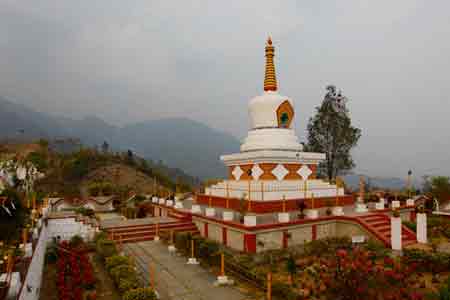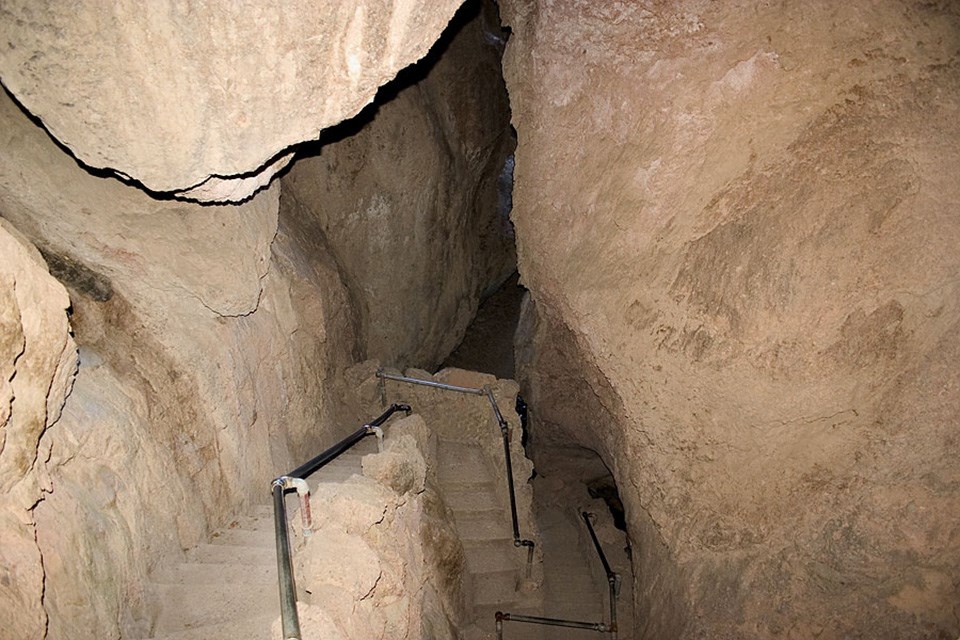Nestled in the serene hills of Arunachal Pradesh, Akashiganga Temple is a sacred site. It attracts pilgrims and tourists alike with its natural beauty and spiritual significance.
Akashiganga Temple holds a special place in Hindu mythology. The temple is believed to be one of the Shakti Peethas, where parts of the goddess Sati fell. This lends the site a deep spiritual importance. Visitors often experience a sense of peace and devotion here.
The temple is surrounded by lush greenery and offers stunning views. This makes it a perfect spot for both spiritual seekers and nature lovers. Whether you’re on a pilgrimage or just exploring, Akashiganga Temple offers a unique and enriching experience.
Ancient Origins
Akashiganga Temple, located in Assam, India, holds great spiritual significance. Known for its sacred water spring, the temple attracts many pilgrims.
## Ancient Origins The Akashiganga Temple, nestled in the scenic landscapes of Assam, India, is a treasure trove of ancient history and spiritual significance. Its origins, shrouded in mystery and legend, offer a fascinating glimpse into the past. As you walk through the temple grounds, you can almost feel the whispers of history echoing through the walls. ###Historical Significance
Akashiganga Temple is not just a religious site; it’s a historical landmark. This temple has been a vital part of the region’s cultural heritage for centuries. Historians trace its origins back to the early medieval period, suggesting that it has been a place of worship and pilgrimage for over a thousand years. The temple’s architecture reflects the craftsmanship of ancient artisans, with intricate carvings and detailed sculptures. The style is distinct, blending local traditions with influences from various dynasties that ruled the area. When you visit, take a moment to appreciate the delicate artistry of the stone carvings and the grandeur of the temple structure. ###Legends And Myths
The legends surrounding Akashiganga Temple add to its mystical aura. One of the most captivating myths is linked to the Hindu epic, the Mahabharata. It is said that the temple marks the spot where a part of the Goddess Sati’s body fell when Lord Shiva carried her remains across the universe. This makes the temple a significant Shakti Peetha, a holy shrine dedicated to the goddess. Another intriguing legend speaks of a divine stream that flows near the temple. This water is believed to have miraculous healing properties. Locals and pilgrims alike collect the water, hoping for blessings and cures. Have you ever wondered if these tales hold any truth? The belief in these myths has continued for generations, adding to the temple’s sacred status. ###Personal Insight
When I visited Akashiganga Temple, the serene atmosphere was striking. The devotion of the pilgrims, the scent of incense, and the sound of prayers created an overwhelming sense of peace. It made me realize how places like these are not just historical sites but living embodiments of faith and tradition. You might find that the stories and history behind Akashiganga Temple offer more than just knowledge—they provide a connection to something timeless and profound. Have you ever experienced a place that made you feel deeply connected to history and spirituality? Akashiganga Temple might just be that place for you. The ancient origins of Akashiganga Temple are a blend of historical significance and enchanting legends. As you explore its rich past, you may find yourself drawn into a deeper understanding of its cultural and spiritual importance.
Credit: www.instagram.com
Architectural Marvel
Akashiganga Temple is not just a place of worship. It is an architectural marvel. The temple’s design and structure attract many visitors. Every part of the temple tells a story. The symbolic elements deepen its spiritual significance.
Design And Structure
The temple’s design reflects ancient craftsmanship. Each wall has intricate carvings. These carvings depict mythological scenes. The main structure stands tall and strong. The temple’s pillars are beautifully adorned. They showcase the skill of old artisans.
The temple complex includes several smaller shrines. These shrines are equally detailed. The overall layout follows traditional architecture. The pathway to the temple is serene and peaceful. Visitors feel a sense of calm as they walk through.
Symbolic Elements
Symbolic elements enrich the temple’s beauty. The entrance has a grand archway. This archway symbolizes a divine threshold. Statues of deities guard the temple. Each statue represents different aspects of life. The temple’s sanctum holds the main deity.
The sanctum’s design is sacred and symbolic. Offerings and rituals are performed here. Decorative motifs cover the walls. These motifs symbolize prosperity and protection. The temple’s roof is shaped like a lotus. The lotus represents purity and enlightenment.
Every element has a purpose. Together, they create a unique spiritual atmosphere. Akashiganga Temple is a blend of art and spirituality.
Spiritual Practices
When you visit Akashiganga Temple, you will find yourself immersed in a world rich with spiritual practices. These practices are not just rituals; they are a way of life that bring tranquility and focus to both the devout and the curious. Whether you are seeking a deeper spiritual connection or simply a moment of peace, Akashiganga Temple offers a unique experience that you won’t forget.
Rituals And Ceremonies
At Akashiganga Temple, rituals and ceremonies are performed with great reverence and precision. Each ritual is designed to invoke blessings and foster a sense of community among worshippers. One of the most captivating ceremonies is the Abhishekam, where the deity is bathed in sacred water. This practice is believed to purify the soul and bring good fortune.
Participating in these ceremonies can be a deeply moving experience. I remember my first visit to the temple; the rhythmic chanting and the fragrant incense created an atmosphere that felt otherworldly. Have you ever wondered how such ancient rituals can still hold relevance today? It’s because they offer a moment of reflection and a break from our fast-paced lives.
Another significant ritual is the Aarti, performed both in the morning and evening. It involves offering light to the deity and is accompanied by devotional songs. The sight of the lit lamps and the sound of the bells can be incredibly uplifting. If you ever attend, you might find yourself swaying along with the chants, feeling a deep sense of connection with everyone around you.
Meditation Techniques
Aside from rituals, Akashiganga Temple is also a haven for those interested in meditation. The serene environment is perfect for quiet contemplation. One popular meditation technique practiced here is Japa, which involves the repetition of a mantra. This can help you focus your mind and achieve a state of inner peace.
When I first tried Japa meditation, I was skeptical. But as I focused on the repetitive chant, I felt a wave of calm wash over me. It made me realize that sometimes, simplicity is the key to unlocking peace.
Another technique is Pranayama, or breath control. This practice helps regulate your breathing, making it easier to concentrate and reduce stress. Imagine taking deep, controlled breaths, feeling your worries dissolve with each exhale. Doesn’t that sound refreshing?
If you’re new to meditation, the temple offers guided sessions. These can be incredibly helpful in understanding the basics and building a routine. Have you ever considered how a few minutes of meditation each day could transform your life? Maybe it’s time to give it a try.
Spiritual practices at Akashiganga Temple offer more than just a religious experience. They provide tools for personal growth, mental clarity, and a deeper understanding of oneself. So, next time you find yourself yearning for peace, why not explore these timeless traditions?
Festivals And Celebrations
Festivals and celebrations at Akashiganga Temple reflect the rich cultural heritage of the region. The temple, nestled in the serene landscapes, comes alive with colors and vibrancy during these events. Devotees from various parts of the country gather here, creating a unique blend of devotion and festivity.
Major Festivals
The temple celebrates several major festivals with great enthusiasm. One of the most significant is Navratri. This nine-day festival honors the goddess and includes elaborate rituals, music, and dance. The temple is beautifully decorated, and special prayers are held each day.
Another important festival is Durga Puja. It marks the victory of goddess Durga over the buffalo demon Mahishasura. The temple hosts grand processions and cultural programs. Devotees offer prayers, seeking blessings for health and prosperity.
Local Traditions
Akashiganga Temple is also known for its local traditions. During festivals, locals perform traditional dances and songs. These performances reflect the region’s cultural richness. They add a unique flavor to the celebrations.
One notable tradition is the offering of special dishes to the deity. These dishes are prepared with locally sourced ingredients. The offerings are then distributed among devotees as prasad. This practice fosters a sense of community and sharing.
Pilgrimage Experience
Embarking on a pilgrimage to the Akashiganga Temple is a unique and spiritually enriching experience. Nestled in the serene surroundings of Assam, India, this temple offers a blend of natural beauty and divine serenity that captivates every visitor. Whether you’re seeking solace, a connection with the divine, or simply an escape from the hustle and bustle of everyday life, Akashiganga Temple has something profound to offer.
Journey To The Temple
The journey to the Akashiganga Temple is nothing short of adventurous. You begin your trip with a drive through the picturesque landscapes of Assam, witnessing lush greenery and rolling hills. The path winds through quaint villages, each offering a glimpse into the local culture and lifestyle. As you approach the temple, the air fills with a sense of tranquility, preparing you for the spiritual experience ahead.
Have you ever felt the excitement build as you near a significant destination? The anticipation is palpable as you catch your first glimpse of the temple. Its unique architecture and the surrounding natural beauty make it a sight to behold. The final stretch involves a short trek, adding a touch of adventure to your spiritual journey. The trek is manageable, even for beginners, and the views along the way are worth every step.
Visitor Tips
Planning to visit Akashiganga Temple? Here are some practical tips to enhance your experience:
- Best Time to Visit: The ideal time to visit is during the early morning or late afternoon. The weather is pleasant, and you can avoid the midday heat.
- Footwear: Comfortable walking shoes are a must. The trek to the temple can be a bit rocky, and good shoes will make the journey easier.
- Local Etiquette: Respect the local customs and traditions. Dress modestly and be mindful of your behavior inside the temple premises.
- Hydration: Carry a water bottle. The trek can be tiring, and staying hydrated is essential.
- Photography: While the views are stunning, check if photography is allowed inside the temple to respect the sanctity of the place.
Have you ever visited a place and felt unprepared? Following these tips can help you avoid common pitfalls and ensure a smooth and fulfilling pilgrimage.
By planning ahead and respecting local customs, your visit to Akashiganga Temple can be a deeply rewarding experience. The journey, the trek, and the temple itself come together to offer a pilgrimage that touches both the heart and soul. Ready to embark on this spiritual adventure? Pack your bags, and let the journey begin!

Credit: www.theindiatourism.com
Nature And Surroundings
Akashiganga Temple is not only a spiritual haven but also a natural paradise. The surroundings offer a serene and tranquil atmosphere, making it a perfect escape from bustling city life. Visitors can immerse themselves in the beauty of nature and experience a deep sense of peace and calm.
Scenic Beauty
The landscape around Akashiganga Temple is breathtaking. Rolling hills and lush green valleys stretch as far as the eye can see. The temple itself is perched atop a hill, offering panoramic views of the surrounding area. The morning mist and the golden hues of sunrise paint a picturesque scene. The serene environment allows visitors to connect deeply with nature.
Wildlife And Flora
The area surrounding the temple is rich in biodiversity. Various species of birds can be seen flitting among the trees. Monkeys, squirrels, and other small animals are frequent visitors. The flora is equally impressive. Tall trees, blooming flowers, and lush vegetation create a vibrant and lively atmosphere. The natural surroundings of Akashiganga Temple are a haven for nature lovers and wildlife enthusiasts.
Cultural Impact
The Akashiganga Temple holds great cultural significance. This sacred site influences various aspects of local life. The temple’s presence shapes traditions, arts, and community bonds.
Local Communities
The Akashiganga Temple serves as a cultural hub. It brings local communities together. Festivals and rituals performed here foster unity. Villagers gather to celebrate and honor their heritage. This strengthens their shared identity.
Many families have close ties to the temple. Their ancestors’ stories connect them deeply. This connection nurtures respect for traditions. It also encourages the younger generation to participate actively. The temple provides a sense of belonging.
Influence On Art
The Akashiganga Temple inspires local artists. Many artworks depict scenes from the temple. These include paintings, sculptures, and intricate carvings. Artists draw inspiration from the temple’s architecture and legends.
Craftsmen create beautiful pieces for rituals and festivals. These artistic expressions preserve cultural heritage. They also promote local craftsmanship. The temple’s influence can be seen in traditional music and dance forms. Performers often dedicate their work to the divine.
The temple fosters a thriving artistic community. It encourages creativity and cultural expression. This keeps the rich traditions alive for future generations.

Credit: www.researchgate.net
Preservation Efforts
The Akashiganga Temple is a place of great spiritual importance. Its preservation is crucial for maintaining its historical and cultural significance. Various initiatives have been undertaken to protect and restore this sacred site. These efforts ensure the temple’s legacy for future generations.
Conservation Projects
Several conservation projects have been launched to preserve Akashiganga Temple. Experts have restored the temple’s ancient architecture. They use traditional methods to maintain its original charm. These projects involve skilled craftsmen who work diligently. Their aim is to protect the temple’s rich history.
Environmental programs are also part of the efforts. Volunteers clean the temple surroundings regularly. They plant trees to enhance the natural beauty of the area. These activities help in maintaining a clean and green environment.
Future Plans
Future plans focus on sustainable preservation methods. There is a proposal to install solar panels. This will provide a renewable energy source for the temple. It reduces the reliance on traditional electricity.
Another plan involves creating a digital archive. This will document the temple’s history and artifacts. It will make information accessible to researchers and visitors. Educational programs will be launched to raise awareness.
These initiatives aim to ensure that Akashiganga Temple remains a cherished heritage site. They strive to preserve its spiritual and cultural essence for the future.
Frequently Asked Questions
Which District Is Akashi Ganga In?
Akashi Ganga is in the Nagaon district. Nagaon is located in the state of Assam, India.
What Is The Story Of Akashi Ganga?
Akashi Ganga is a sacred waterfall in Assam. It is believed to be linked to the legend of Goddess Sati. Her body parts fell here, creating holy sites. Devotees visit for spiritual cleansing.
Which Temple Is Famous In Arunachal Pradesh?
The Parshuram Kund Temple is famous in Arunachal Pradesh. It attracts numerous devotees and tourists annually.
What Is The Significance Of Kankalitala Temple?
Kankalitala Temple is a significant Shakti Peetha in West Bengal. It is revered for its spiritual importance and attracts numerous devotees.
Conclusion
Akashiganga Temple offers a serene and spiritual experience. The scenic beauty surrounding the temple captivates visitors. Pilgrims find peace and divine connection here. Exploring the temple’s history enriches your spiritual journey. Every visit leaves you feeling rejuvenated and blessed. Plan your visit to witness the divine charm.
Embrace the tranquility and beauty of Akashiganga Temple. Feel the sacred aura and deepen your faith. Let your soul be touched by this mystical place. Visit Akashiganga Temple for an unforgettable spiritual retreat.
{ “@context”: “https://schema.org”, “@type”: “FAQPage”, “mainEntity”: [ { “@type”: “Question”, “name”: “Which district is Akashi Ganga in?”, “acceptedAnswer”: { “@type”: “Answer”, “text”: “Akashi Ganga is in the Nagaon district. Nagaon is located in the state of Assam, India.” } } , { “@type”: “Question”, “name”: “What is the story of Akashi Ganga?”, “acceptedAnswer”: { “@type”: “Answer”, “text”: “Akashi Ganga is a sacred waterfall in Assam. It is believed to be linked to the legend of Goddess Sati. Her body parts fell here, creating holy sites. Devotees visit for spiritual cleansing.” } } , { “@type”: “Question”, “name”: “Which temple is famous in Arunachal Pradesh?”, “acceptedAnswer”: { “@type”: “Answer”, “text”: “The Parshuram Kund Temple is famous in Arunachal Pradesh. It attracts numerous devotees and tourists annually.” } } , { “@type”: “Question”, “name”: “What is the significance of Kankalitala Temple?”, “acceptedAnswer”: { “@type”: “Answer”, “text”: “Kankalitala Temple is a significant Shakti Peetha in West Bengal. It is revered for its spiritual importance and attracts numerous devotees.” } } ] }





